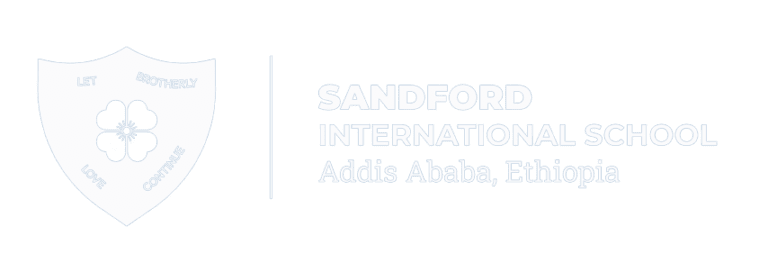75 Years of History - The Sandford story continues …
The origins of Sandford International School can be traced back to the early 1940s when Mrs. Christine Sandford wanted to establish an English-speaking school for her children. Christine Sandford was the wife of Colonel Sandford, Head of the British Military Mission to Ethiopia during World War II, who along with Cunningham and Wingate, led the British contingent to help Emperor Haile Selassie I and the Ethiopian army reclaim the country from 5 years of Italian occupation under Mussolini’s Government.
Colonel Sandford liked Ethiopia very much and decided to live here with his family. As close friends of the Emperor and the restored government, the Sandford family was granted land for farming and for building a school.
At that time, the school was known as Sandford English Community School. It grew rapidly, and in a manner befitting the founders. From the beginning, as agreed with the Imperial Government, the school was open to Ethiopians with a reduced, subsidised system of fees to allow the attendance of Ethiopian children, including children of the Royal and other leading families.
By 1949, with the full support of Emperor Haile Selassie I and the school community, the school moved to its present location.
Its role has been unique in Ethiopia and in Africa. It was one of the first international schools in Africa for both nationals and expatriates learning on an equal basis.
The last Sandford family member to run the school, on a salaried basis, was Philippa “Pippa” Sandford, who reported to the Board and the General Assembly before retiring in 1993, when the school had approximately 400 students.
In 2001, Sandford English Community School was re-registered as “Sandford International School”.
Today, the school offers IGCSE Cambridge examinations and the International Baccalaureate at Years 11 and 13 respectively.
Sandford International School is a co-educational, non-boarding, nursery to the pre-university institution. To meet the international standards of its programs, the school employs a highly qualified professional staff.
The roots of Sandford International School stretch back to the early 1940s, when Mrs. Christine Sandford sought to establish an English-speaking school for her children. Christine Sandford, wife of Colonel Sandford, Head of the British Military Mission to Ethiopia during World War II, played a pivotal role alongside Cunningham and Wingate in assisting Emperor Haile Selassie I and the Ethiopian army in reclaiming the country from Italian occupation under Mussolini’s Government.
Captivated by Ethiopia, Colonel Sandford decided to settle in the country with his family. As close associates of the Emperor and the restored government, the Sandford family was granted land for both farming and the construction of a school.
Initially known as Sandford English Community School, it quickly flourished, embodying the founders’ commitment to living in Ethiopia and educating their children alongside Ethiopian counterparts. In accordance with an agreement with the Imperial Government, the school welcomed Ethiopian students, offering reduced, subsidized fees to facilitate their attendance, including children from the Royal and other prominent families.
By 1949, with the backing of the Emperor and the school community, Sandford English Community School relocated to its current site.
The school’s role has been unique in Ethiopia and Africa, standing as one of the earliest international schools on the continent, catering to both nationals and expatriates on equal footing.
The last member of the Sandford family to oversee the school, Philippa “Pippa” Sandford, served on a salaried basis until her retirement in 1993, when the school boasted approximately 400 students.
In 2001, Sandford English Community School rebranded as “Sandford International School” and introduced the International Baccalaureate programme. The school underwent structural reorganization into three sections: Primary School (Nursery to Year 6), Secondary School (Year 7 to Year 13), and Adult Evening School. Public examinations include Ethiopian National Examinations at Year 8 and Year 10, IGCSE at Year 11, and the International Baccalaureate at Year 13.

